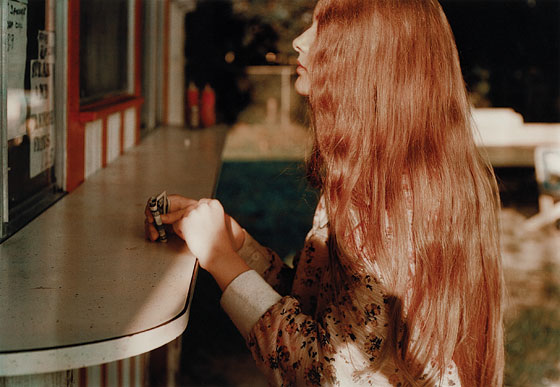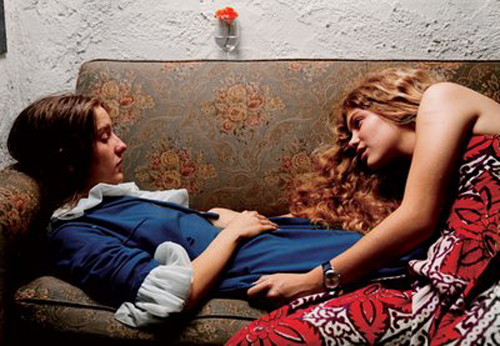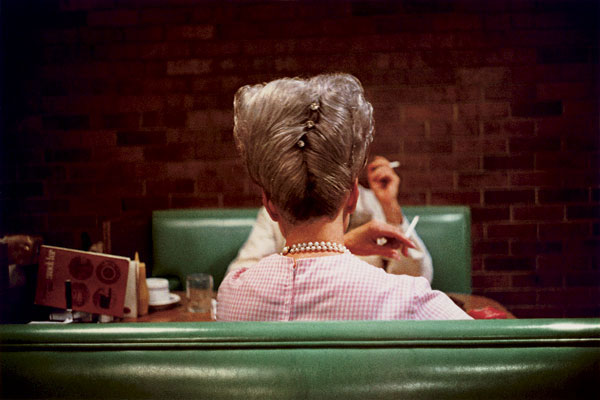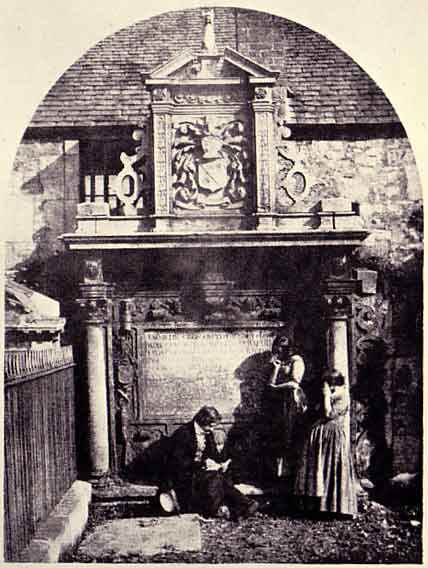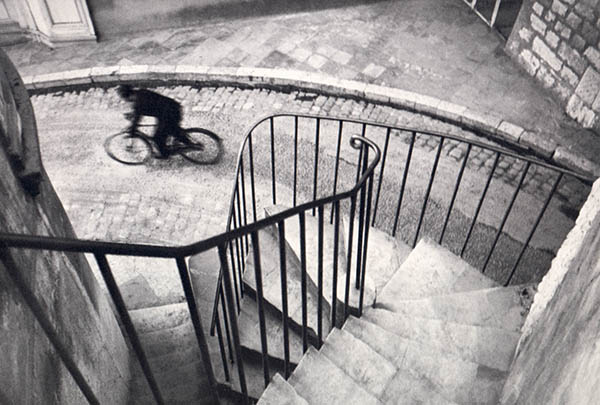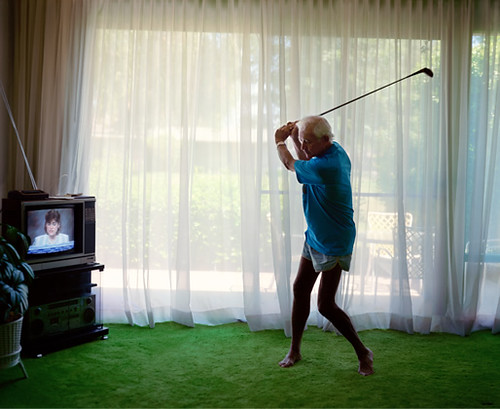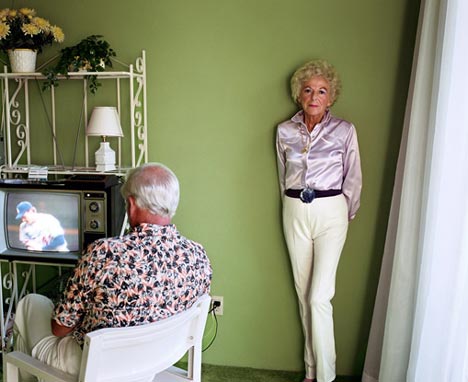Eggleston has a unique ability to find beauty, and striking displays of color, in ordinary scenes. A dog trotting toward the camera; a Moose lodge; a woman standing by a rural road; a row of country mailboxes; a convenience store; the lobby of a Krystal fast-food restaurant -- all of these ordinary scenes take on new significance in the rich colors of Eggleston's photographs. Eudora Welty suggests that Eggleston sees the complexity and beauty of the mundane world: "The extraordinary, compelling, honest, beautiful and unsparing photographs all have to do with the quality of our lives in the ongoing world: they succeed in showing us the grain of the present, like the cross-section of a tree.... They focus on the mundane world. But no subject is fuller of implications than the mundane world!"
Mark Holborn, in his introduction to Ancient and Modern writes about the dark undercurrent of these mundane scenes as viewed through Eggleston's lens: "[Eggleston's] subjects are, on the surface, the ordinary inhabitants and environs of suburban Memphis and Mississippi--friends, family, barbecues, back yards, a tricycle and the clutter of the mundane. The normality of these subjects is deceptive, for behind the images there is a sense of lurking danger." American artist Edward Ruscha said of Eggleston's work, "When you see a picture he’s taken, you’re stepping into some kind of jagged world that seems like Eggleston World.”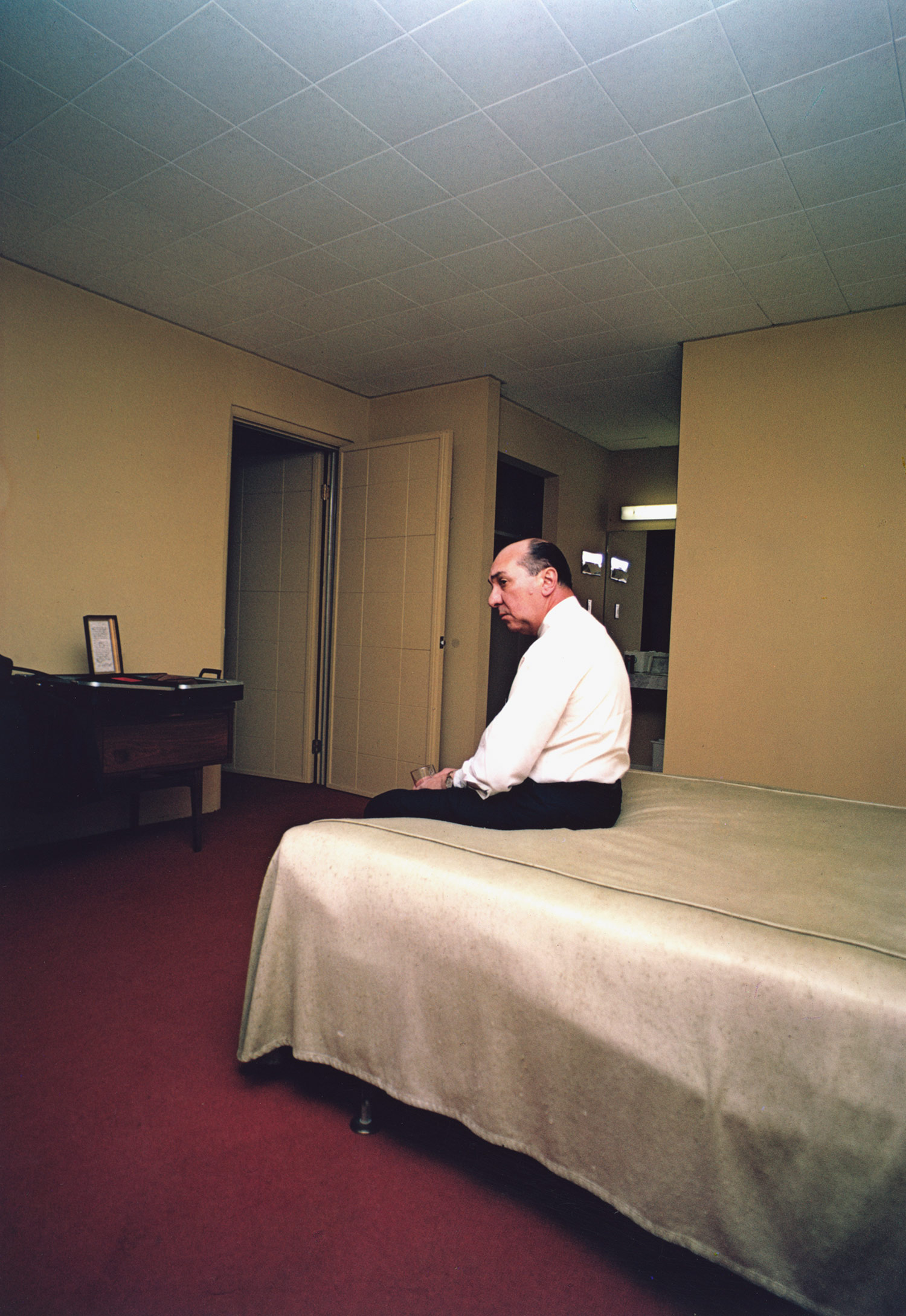
John Szarkowski's introduction to William Eggleston's Guide 1976.
The Getty Museum; www.getty.edu
www.egglestontrust.com/
